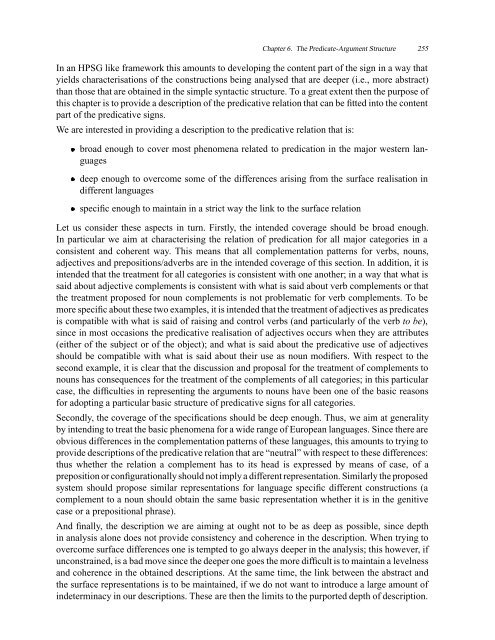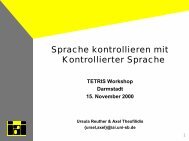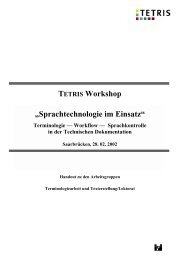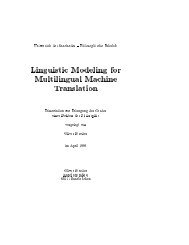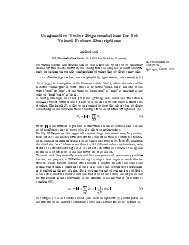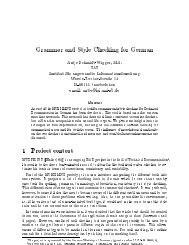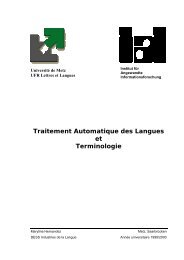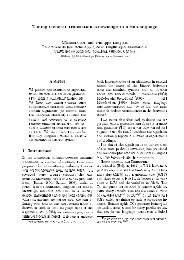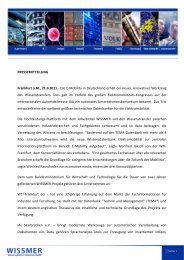Predicate-Argument Structure
Predicate-Argument Structure
Predicate-Argument Structure
Create successful ePaper yourself
Turn your PDF publications into a flip-book with our unique Google optimized e-Paper software.
Chapter 6. The <strong>Predicate</strong>-<strong>Argument</strong> <strong>Structure</strong> 255<br />
In an HPSG like framework this amounts to developing the content part of the sign in a way that<br />
yields characterisations of the constructions being analysed that are deeper (i.e., more abstract)<br />
than those that are obtained in the simple syntactic structure. To a great extent then the purpose of<br />
this chapter is to provide a description of the predicative relation that can be fitted into the content<br />
part of the predicative signs.<br />
We are interested in providing a description to the predicative relation that is:<br />
<br />
<br />
broad enough to cover most phenomena related to predication in the major western languages<br />
deep enough to overcome some of the differences arising from the surface realisation in<br />
different languages<br />
<br />
specific enough to maintain in a strict way the link to the surface relation<br />
Let us consider these aspects in turn. Firstly, the intended coverage should be broad enough.<br />
In particular we aim at characterising the relation of predication for all major categories in a<br />
consistent and coherent way. This means that all complementation patterns for verbs, nouns,<br />
adjectives and prepositions/adverbs are in the intended coverage of this section. In addition, it is<br />
intended that the treatment for all categories is consistent with one another; in a way that what is<br />
said about adjective complements is consistent with what is said about verb complements or that<br />
the treatment proposed for noun complements is not problematic for verb complements. To be<br />
more specific about these two examples, it is intended that the treatment of adjectives as predicates<br />
is compatible with what is said of raising and control verbs (and particularly of the verb to be),<br />
since in most occasions the predicative realisation of adjectives occurs when they are attributes<br />
(either of the subject or of the object); and what is said about the predicative use of adjectives<br />
should be compatible with what is said about their use as noun modifiers. With respect to the<br />
second example, it is clear that the discussion and proposal for the treatment of complements to<br />
nouns has consequences for the treatment of the complements of all categories; in this particular<br />
case, the difficulties in representing the arguments to nouns have been one of the basic reasons<br />
for adopting a particular basic structure of predicative signs for all categories.<br />
Secondly, the coverage of the specifications should be deep enough. Thus, we aim at generality<br />
by intending to treat the basic phenomena for a wide range of European languages. Since there are<br />
obvious differences in the complementation patterns of these languages, this amounts to trying to<br />
provide descriptions of the predicative relation that are “neutral” with respect to these differences:<br />
thus whether the relation a complement has to its head is expressed by means of case, of a<br />
preposition or configurationally should not imply a different representation. Similarly the proposed<br />
system should propose similar representations for language specific different constructions (a<br />
complement to a noun should obtain the same basic representation whether it is in the genitive<br />
case or a prepositional phrase).<br />
And finally, the description we are aiming at ought not to be as deep as possible, since depth<br />
in analysis alone does not provide consistency and coherence in the description. When trying to<br />
overcome surface differences one is tempted to go always deeper in the analysis; this however, if<br />
unconstrained, is a bad move since the deeper one goes the more difficult is to maintain a levelness<br />
and coherence in the obtained descriptions. At the same time, the link between the abstract and<br />
the surface representations is to be maintained, if we do not want to introduce a large amount of<br />
indeterminacy in our descriptions. These are then the limits to the purported depth of description.


